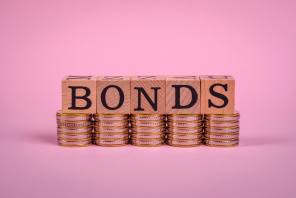

The performance of global bond funds has exceeded expectations in recent years, with low inflation and even lower interest rates in regions like the US, the UK and continental Europe helping to take a decades-long bull market to new heights.
The launch quantitative easing (QE) programmes, in which the purchasing of bonds by central banks results in a boost to their value, has also aided fixed income returns in those regions and Japan.
But the largely positive news for global bonds is not expected to last into 2017. A large factor behind this anticipated change is the maturing of the economic cycle in the US. The US Federal Reserve raised interest rates in December for the second year in succession, and at least two further hikes are expected this year.
This matters for fixed income investors worldwide, because government bonds issued by countries such as the UK tend to closely track the performance of US sovereign debt.
The UK is some way away from raising interest rates – the Bank of England went the other way last August and cut the base rate to 0.25 per cent in a disputed move following the Brexit vote. But the expectation of less accommodative policy in the US has had an impact on gilts nonetheless. Ten-year UK gilt yields have risen from a record low of 0.5 per cent in August to 1.3 per cent as of last month, and reached 1.5 per cent in January 2017.
Admittedly, this move only took yields back to where they were at the start of last year. However, the arrival of US president Donald Trump has got many bond investors nervous. A fiscal stimulus programme of the kind proposed by the new administration is rarely attempted at a time of relatively healthy GDP growth. Its implementation could cause inflation levels to jump higher, hurting bonds further in the process.
Higher inflation is already starting to emerge in the UK, where the weakening of the pound has already prompted a rise in prices. The UK is also among those countries shifting away from austerity in favour of fiscal stimulus. These initiatives could be funded by greater borrowing, which could also weigh on bonds.
Set against these headwinds are structural factors, such as pension funds’ demand for fixed income, as well as a sense of déjà vu: market commentators have predicted the end for bonds almost every year for the past half decade.
Yet fixed income has continued to flourish. Even investors in European government bonds, caught up in the European sovereign debt crisis of recent years, have seen a significant rally in their holdings since European Central Bank (ECB) president Mario Draghi’s infamous “whatever it takes” speech in 2012.
High yield
Global bond funds’ success is not just down to government bond prices. They have also been helped by the performance of credit – debt issued by companies – particularly of the high-yield variety. These bonds, so called because their elevated yields compensate investors for the greater levels of risk involved, have been particular beneficiaries of the era of QE and investors’ constant demand for income.
In the past 12 months, they have also benefited from the rebound in the oil price, with many issuers being companies that belong to energy or energy-related sectors. The upshot of this, though, is that these yields are now not so high – another potential headwind for global bond funds in future.
The standouts
Figures from FE, as shown in Table 1, highlights the top 20 performing global bonds over five years. As the data shows, the best performing fund in the selection is the Gam Star Credit Opportunities, which grew to £2,078.8 based on a £1,000 investment over five years, equating to 15 per cent annualised growth.
This return is based on the fund’s US dollar share class, which has received an artificial boost from that currency’s strength in recent years.
The fund’s largest weighting is to the financial services sector, according to Morningstar.
Managed by Anthony Smouha, CEO of corporate bond specialist Atlanticomnium, the fund’s top 10 positions reflect this focus: its major positions include seven financial firms, including bonds issued by Aberdeen Asset Management, as well as some commodity companies such as Glencore that rebounded sharply last year.
Despite this, the fund’s overall one-year performance is less impressive. Its top holding, hedge fund Pershing Square, suffered poor returns last year, with a loss of 12.3 per cent between 1 January 2016 and the end of November 2016.
Much like Pershing Square, the second largest holding Lloyds Bank, suffered last year, contending with a 15 per cent profit decline in the third quarter and the widening of its pension deficit among other blows to performance.
Launched in July 2011, the Ireland-domiciled fund nonetheless rose 26.9 per cent last year, aided by sterling weakness. The fund says it typically holds investmen-grade (higher-quality) companies, but a yield in excess of 5 per cent indicates that it is also able to buy higher-yielding debt.
Sterling’s slump meant the 2016/17 period generally produced better results for the majority of the funds in the table when compared with the previous four years.
More than half of the funds in Table 1 focus solely on high- yield debt, indicating the extent of the returns on offer from this asset class over the past five years. The majority of the funds also managed to post positive returns in each of the discrete 12-month periods assessed.
The exceptions were largely found in 2015/16; a more difficult period for some higher-yielding funds as a result of the falling oil price hurting energy companies.
One notable high-yield fund which did well during 2015/16 was Pioneer Sicav Euro High Yield. At a time when many peers struggled, the fund returned 2.8 per cent.
This may be attributed to the fact that European bonds were in higher demand following the ECB interest rate cut and rollout of QE, but it may also simply reflect a rebound from the previous 12-month period when the fund lost 6 per cent.
Global bonds is a fairly disparate sector, but one striking result from the table is the similarity of five-year returns. Gam aside, there is just £230 difference between the second-best performer – Schroder ISF Global High Yield – and the 20th, Aberdeen Global Select High Yield Bond.
Aberdeen’s fund is another that is notable for having done well during a more difficult 2015/16, but struggling in 2014/15. It lost 5.4 per cent over this period, which is the second worst return in the table behind Pioneer’s European product, at a time when the typical fund in the rankings returned 10 per cent.
Nine out of the top 20 funds have existed for 10 years or more, and of those the Pimco GIS Euro Ultra Long Duration came out on top for cumulative performance over 10 years.
With an AGR of 14.4 per cent, the Pimco fund surpassed the average by some distance. Its base currency is euros, and it is managed by Lorenzo Pagani, managing director and portfolio manager, and head of the European government bond and European rates desk, at Pimco.
Despite achieving such impressive returns over the past decade, the fund’s performance has fluctuated dramatically on a year-on-year basis. In 2016/17, for example, the fund saw 11.5 per cent annualised growth, while in 2015/16 and 2013/14, it shed -1.3 and -4 per cent, respectively.
If bond returns are to struggle further in the coming years, it is long duration funds that will be hurt the most. Their sensitivity to interest rate rises is much higher than other portfolios’, meaning that even the slightest move higher in benchmark bond yields could have a severe effect. As a result, it would be difficult to find a retail fund buyer who would recommend such products at the moment.
The worm turns?
Many have speculated that bonds have reached an inflection point, but whether this proves to be the case is uncertain. On one hand is the drop in bond prices seen in recent months, but on the other is investors’ need for yield. In the case of higher-yielding debt, any fall in prices will only serve to make those yields look more attractive again.
There are also other factors for investors to consider in the coming months. In Europe, the upcoming French and German elections could yet spring a surprise similar to those seen in the US and UK in 2016. What this would do to bond prices on the continent is up for debate, but a continuation of the status quo would likely be a positive for bondholders.
Victory for the likes of the National Front in France, though, would arguably be bad for the country’s debt, but positive for other nations if investors seek safe havens such as Germany and the UK.
The ECB may also have a role to play. While it cannot rival the Fed’s influence on the global bond market, European debt is another matter. The central bank has already set a cut off point for its current round of asset purchases, and any further signs that it is looking to scale back the horizons of its QE programme could spell trouble ahead. By contrast, a more open attitude would be helpful for sovereign and corporate debt.
Further afield, US protectionism, which could intensify in the year ahead, may benefit economically independent countries such as India. But many others could reap the negative effects of Trumpist policies. It is these kinds of questions that bond funds must keep an eye on, even as they focus on the basics of company and sector selection.
With bond yields continuing to rise, it would take a brave investor indeed to predict another year of excess returns for the asset class. A cautious approach would suggest that the bond performance of 2016 will not repeat itself any time soon.



